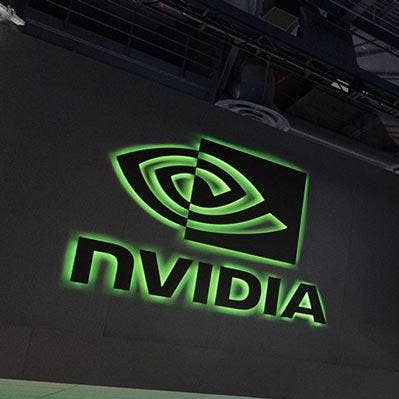Nvidia CEO: Enterprise AI Is Driving Growth In The Data Center
'We are building a broad base of customers across multiple industries as they adopt GPUs to harness the power of AI,' Nvidia CEO Jensen Huang says of the chipmaker's growth in enterprise AI as a couple of cloud service providers drag sales for its data center business.

Nvidia CEO Jensen Huang said artificial intelligence for edge applications and conversational interfaces will drive near-term growth as the chipmaker begins to recover from a dip in data center revenue thanks to AI adoption by enterprises.
"Those are two near-term drivers, and I think it's fair to say they're both large opportunities," Huang said on the company's second-quarter earnings call on Thursday.
[Related: Nvidia Sets New Conversational AI Records, Shares Code To Help Others]
While the Santa Clara, Calif.-based GPU powerhouse saw a double-digit decline in revenue for the second quarter of its 2020 fiscal year, all its businesses, including gaming and data center, showed signs of recovery thanks to growth from the previous quarter.
"We are seeing that the wave of AI is going from the cloud to the enterprise to the edge to the autonomous systems," Huang said.
Nvidia's data center business, which revolves around server GPUs optimized for artificial intelligence and other workloads, dropped 14 percent in the second quarter from the same period while year while growing a modest 3 percent sequentially to $655 million.
Huang attributed the year-over-year revenue drop to lower demand from two unnamed cloud service providers while sequential growth came from enterprises expanding their AI workloads.
"We are building a broad base of customers across multiple industries as they adopt GPUs to harness the power of AI," he said.
One example, Huang said, is a large retailer, which is using data center GPUs to reduce the time to create forecasting models for product demand from weeks to hours.
Beyond companies using GPU for internal AI uses, there are a growing number of startups that are using GPU to create AI-based products and services, according to Huang, citing delivery robots, chat bots and fraud detection as examples.
"These applications and vertical industries are really spreading all over the place," he said.
One analyst on the earnings call questioned to what extent enterprise AI adoption is happening, given the modest sequential growth that was seen in the data center business.
Collette Kress, Nvidia's CFO, said while enterprises drove sequential growth, it was dragged by lower demand from two cloud service providers. Other cloud service providers, or hyperscalers, were flat while some were increasing their demand for Nvidia's data center GPUs, she added.
"We believe that our continued growth with the industries is important for us in the long term for the expanded use of AI," Kress said.
Nvidia's largest business, gaming, which consists of graphics cards for PCs and chips for consoles like the Nintendo Switch, saw a 27 percent decline year-over-year in second-quarter revenue but it was up 24 percent from the previous quarter to $1.3 billion.
Huang said adoption of the chipmaker's RTX graphics cards, which are the first in the industry to provide real-time ray tracing, have "reached a tipping point."
"We put all the pieces into place to bring ray tracing into the future of games," he said, noting that more PC games are adopting the cinema-quality rendering technique that makes games look more realistic.
While the company's gaming, data center and OEM businesses showed varying signs of recovery from a decline in sales, the two segments that grew annually and quarterly in the second quarter were the automotive unit, whose revenue increased year-over-year to $209 million, and professional visualization, which was up 4 percent to $291 million from the same period last year.
Nvidia's second-quarter revenue was $2.58 billion. That marked a 17.3 percent decrease from the same period last year but a 16 percent sequential increase while also exceeding Wall Street's expectations by $30 billion. The company's net earnings were $1.25 per share, beating analyst estimates by 9 cents.
The company predicted $2.9 billion in revenue for the third quarter, plus or minus 2 percent, which would mark a roughly 6.5 percent decrease year-over-year.
The chipmaker's stock price was up as much as 6 percent in after-hours trading Thursday.